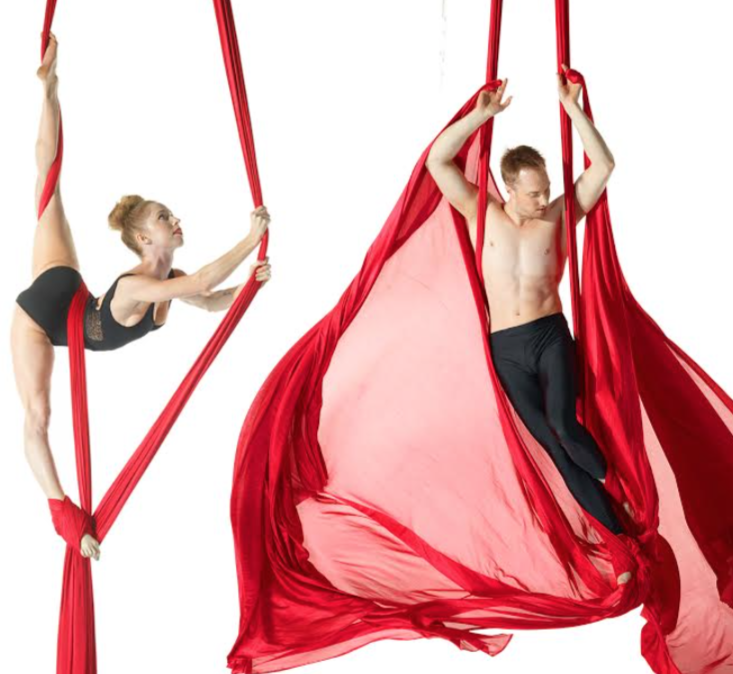Performance anxiety, commonly referred to as “stage fright” in performing arts contexts, is a distressing and disabling condition that affects performers of all ages. At least half of all performing artists, regardless of age, gender, and talent or experience level, report problems associated with performance anxiety.
The symptoms of performance anxiety can be categorized in terms of physical and mental reactions to a perceived or real threat. The “threat” is often the fear of potential performance mistakes or negative audience reactions that would result in feelings of embarrassment or humiliation. The irony is that performance anxiety can actually impact the quality of your performance, resulting in the very experiences you are attempting to avoid, and creating greater anxiety about future performances.

Original image by Alfonso Miranda @ponchoart
Many aerial students and professionals experience performance anxiety. Whether it be before and/or during a live performance in front of a large audience or during a structured improvisation or informal performance during class.
Anxiety doesn’t have to be your enemy. In fact, if you are able to recognize and harness your performance anxiety, it can actually help to serve your performance in the sense of healthy excitement and adrenaline, ensuring that your performance is energized and successful.
“A little bit of stage fright, then I’m ready.” —Faith Hill
According the the American College of Sports Medicine;
“The focus (of managing anxiety) should be on working to control the anticipatory energy in order to optimize one’s performances. Most people perform better when they feel relaxed. Relaxation is an active process, not a passive one. It is something that needs to be practiced in order to be effective.”
Suggestions for Managing Performance Anxiety
1. Remember to Breathe
Take a few slow, deep breaths regularly throughout the day to release tension. Inhale slowly through the nose down to the diaphragm and exhale slowly out the mouth. Work to create respiration cycles that last 10 seconds (5 second inhale… 5 second exhale). It is important to practice this exercise regularly, both during and outside rehearsals and classes, to create a habit of relaxation. Before every performance, it may help to take 4 or 5 slow, deep, relaxing breaths to re-create the feelings experienced during the day.
2. Practice Positive Self Talk
As you breathe, mentally remind yourself that you are ready to perform. Say to yourself: “I am prepared and ready to perform” or “I can do it.” Positive self-talk is most effective when the message relates to the process of performing (i.e., “I am prepared”), rather than an outcome (i.e., “I will win the competition.”)
3. Evaluate After you Perform
You will have plenty of time after a performance to critique, criticize, and try to improve. Optimal performances happen when you allow yourself to trust in your ability and just perform. Everyone makes performance mistakes. The difference between experienced, professional aerialists and everybody else is how quickly they recover from mistakes (not necessarily the absence of mistakes).
4. Find a Supportive Aerial Tribe
Surrounding yourself with positive, inspiring people will also help calm your anxiety so be sure to take class with instructors who provide positive reinforcement and feedback rather then just criticism. The same can be said for your aerial partners and training buddies. Ensure that the energy around you is supportive and safe and that you have what you need to stay positive and relaxed in the air.
Have a wonderful rest of your week. Don’t forget to breathe!







